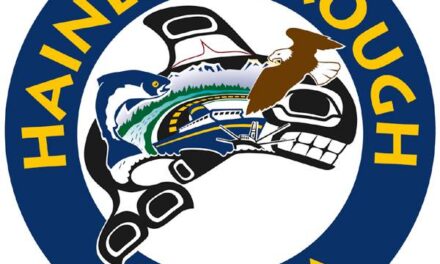
A Haines skiier heads out into the backcountry. (Abbey Collins)
As winter descends near Haines, adventurers face weak snowpack and avalanche danger.
This year, the first avalanche reported near Haines was a close call.
“A snowboarder coming down near Nahadini triggered a significant avalanche that probably could have buried the person had he been caught,” said Haines Avalanche Center Director Erik Stevens.
Luckily, no one was hurt.
Stevens is driving the Al-Can: he’s headed to an avalanche conference in Anchorage. He’s worried about the unusually poor snow conditions he’s seeing in Haines Pass.
“Normally, we have a much stronger, thicker snowpack by this time of year. I’ve been forecasting in Haines for seven years now. I don’t think I’ve seen it set up quite like this before, where it’s so thin, so early on,” he said. “Typically, that leads to some pretty big avalanche concerns as winter goes along.”
October had half its usual precipitation. he says. In Haines Pass, there are less than two feet of snow above the treeline where usually, there’d be three to five feet.
Thin snow could create danger later in the season.
When temperatures plummet at the surface, snow underneath can grow together into “facets” — big, hollow crystals that don’t hold weight well.
“It forms a weak layer, which can persist for weeks, or even months after it’s been buried by future snowstorms,” Stevens said.
His recommendations for people who want to get into the backcountry? Make sure everyone wears — and knows how to use — a beacon, shovel, and probe. Stay away from weak looking snow. If you’re less experienced, stay off slopes more than 30 degrees.
“For now we’re advising general caution,” he said. “People should be expecting avalanche danger.”
The Avalanche Center will start making forecasts in a few weeks, he said, when more people are out gathering snow observations.
“Even if you don’t really know anything about snow or snow pack or avalanches you can still submit useful data,” he said. “Just knowing what you saw while you’re out there. Was it snowing? Is it windy? Was the snow hard or dee and powdery? Any amount of detail you can provide is really helpful.”
Skiiers, snowboarders, snow-machiners, snowshoers and more can submit observations here.








